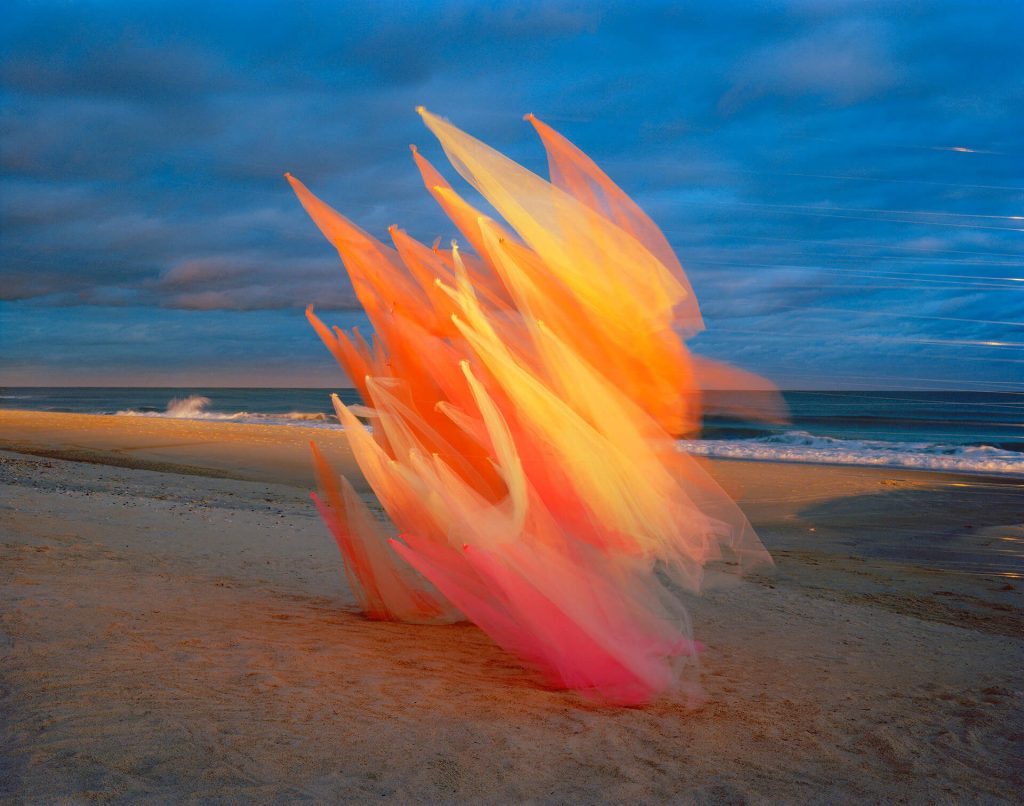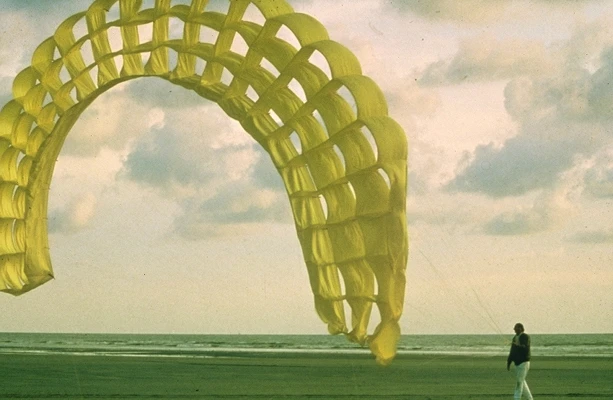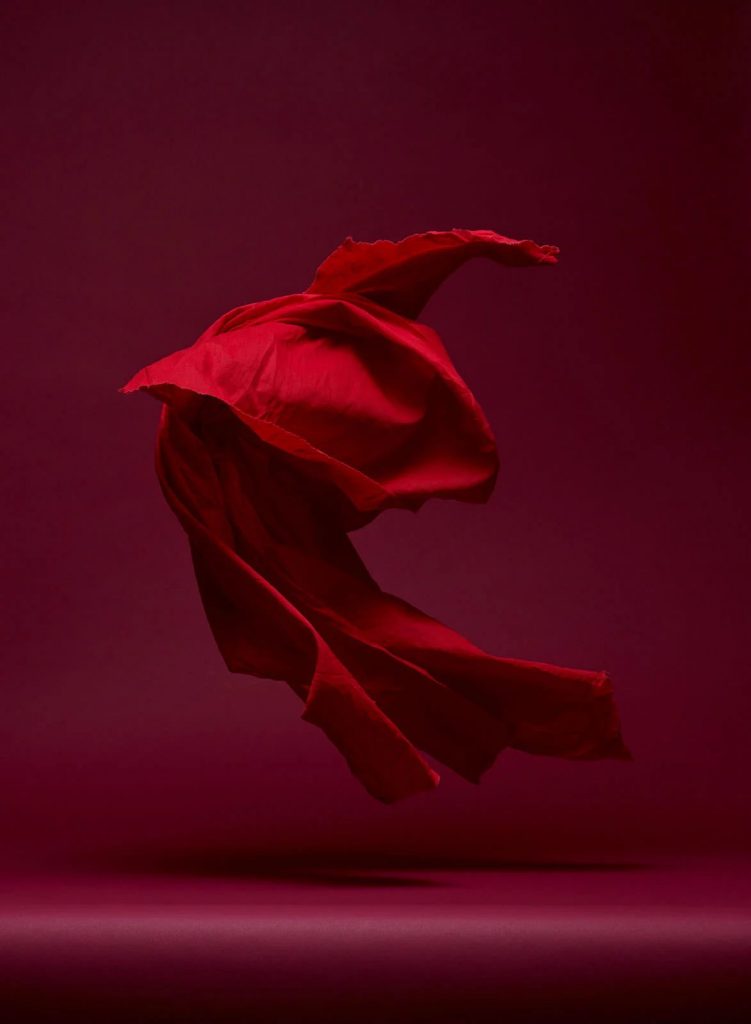presentation: https://docs.google.com/presentation/d/1MD3DaghNnM6vruBCg17UYPrlXYZCgPrf5Wi2p8NMuK0/edit#slide=id.g1fc2a9a951b_0_57
Installation artist and photographer Thomas Jackson creates large-scale kinetic textile pieces that connect the natural world to the fabricated world. Jackson hangs tulle, tutus, or other textiles from fishing wire and arranges them in a composition. The textiles seem to float mysteriously in the air and dance in the wind, their movement chaotic but somehow also choreographed.

Jackson’s work is striking because although the contrast between the landscape and material is clear, the two components coexist in an oddly beautiful way. Jackson’s photographs display the softness of the tulle’s movement, and the videos bring the installations to life.


Jackson employs some techniques and concepts here that could be particularly interesting for our class. These include:
Utilizing the landscape. Jackson’s installations are in conversation with the environment around them. His pieces tell a story about the space it inhabits, and vice versa. When designing an installation for the final project, we might also consider the relationship between our creations and its space.
Materiality. Jackson uses synthetic textiles in bright colors to create contrast with the natural landscape. This is a commentary on the relationship humans have with the environment today, but also just creates visual interest.
Natural power. The power source for Jackson’s installation is wind. His pieces are unpredictably controlled by the environment. A kinetic sculpture doesn’t have to have a measured, controlled movement; it can be wild, too.
Something not made immediately apparent by the work is that Jackson encountered a lot of failure when trying to get installations to work with the wind. Looking at the photos, the installations might seem quite simple. In reality, the wind truly is unpredictable – if you really want to work with something natural, you have to be okay with that.
There are many other photographers that work with capturing movement in nature and of textiles. There are also many installation artists that create sculptures that interact with the wind. I’ll add some examples below. What is special about Thomas Jackson is he does both installation and photography.



Sources:
https://thomasjacksonphotography.com/information.html
https://www.danielgraffin.com/wind-sculptures
https://petapixel.com/2021/03/11/photographer-shoots-dance-photos-of-fabrics-in-motion/
https://www.icelandaurora.com/photo-tutorials/tonys-magic-cloth-technique/
Leave a Reply
You must be logged in to post a comment.